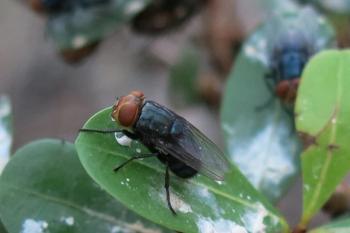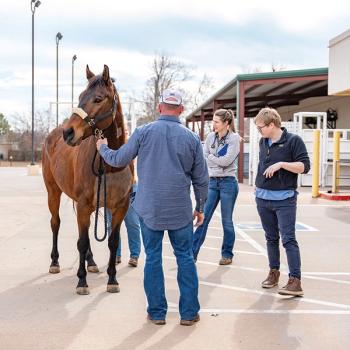
Equine antimicrobial resistance still debatable
Equine practitioners may still take the backseat to food animal practitioners in the debate over antimicrobial resistance, but their input may help sustain prudent use of controversial drugs for all species.
Equine practitioners may still take the backseat to food animal practitioners in the debate over antimicrobial resistance, but their input may help sustain prudent use of controversial drugs for all species.
"Practitioners have a major responsibility in ensuring the continuedeffectiveness of antimicrobials, which are vitally important in the treatmentof infectious disease in equine patients," says Dr. Josie Traub-Dargatz,lead author of a paper on "Antimicrobial Resistance - What's the BigDeal?," which she presented at the annual convention of the AmericanAssociation of Equine Practitioners in December.
"We as equine practitioners can show we are doing our part to limitthe development of antimicrobial resistance by working with our clientsto help them keep their animals healthy in the first place," she says.
The paper is a joint collaboration of Traub-Dargatz, Dr. David Dargatzand Dr. Paul S. Morley, all professors at Colorado State University.
The presentation concerned the evolving issues regarding bacteria resistantto one or more antimicrobials that then may infect their equine patientsor themselves.
A meatier issue
Although antimicrobial resistance most frequently dominates food animalcircles, Traub-Dargatz says equine veterinary practitioners should be equallyconcerned for several reasons:
* The documented occurrence of resistant infections in equinepatients.
* The likelihood that few, if any, new antimicrobials will reachthe market for veterinary use.
* Potential public health impacts of resistant bacterial infections.
No scientific proof
The authors agree that most information needed to determine the extentof the antimicrobial resistance problem in equine medicine is lacking. Sincethere is no national system tracking antimicrobial resistance of animalpathogens, Traub-Dargatz says the frequency of treatment failure due toantimicrobial resistance in equine patients is unknown.
Compound that with the unlikely event that new antimicrobials will evenreach the market in the future.
"The more drugs have an impact on human health, the harder it willbe to get drugs approved in food animal, eventually, equine and small animal,"says Traub-Dargatz. Not to mention the cost-prohibitive factor - the costto bring a new drug to market today is at least $300 million, experts estimate.
Professional attempt
Whether new drugs are introduced or not, Traub-Dargatz says she commendsthe AAEP for taking the initiative for the equine profession when it introducedthe "Prudent Use Guidelines for Antimicrobials" in 2001, jointlyapproved by the AAEP board and the executive board of the American VeterinaryMedical Association. The guidelines outline appropriate use of antimicrobialdrugs for equines. Find them online at www.avma.org/scientist/-jtua/equine/jtuaequine.asp.
"AAEP prudent use principles are a good starting place," addsMorley. "From a professional perspective, we can point to them andsay we are concerned about this this is our official statement.
"I think we need to go further. They don't specifically tell a veterinarianin practice how they should and shouldn't use antimicrobials. That's thenext step," he says.
Building on the groundwork laid by AAEP, the American College of VeterinaryInternal Medicine has asked Morley to chair an ad hoc committee to preparea consensus statement regarding antimicrobial use among specialists of allspecies.
"I hope we will go another step in recommending how specialistsshould consider use of antimicrobial drugs and go beyond what is statedin the prudent use guidelines," says Morley. The statement will beprepared by the June meeting of the ACVIM.
Newsletter
From exam room tips to practice management insights, get trusted veterinary news delivered straight to your inbox—subscribe to dvm360.






